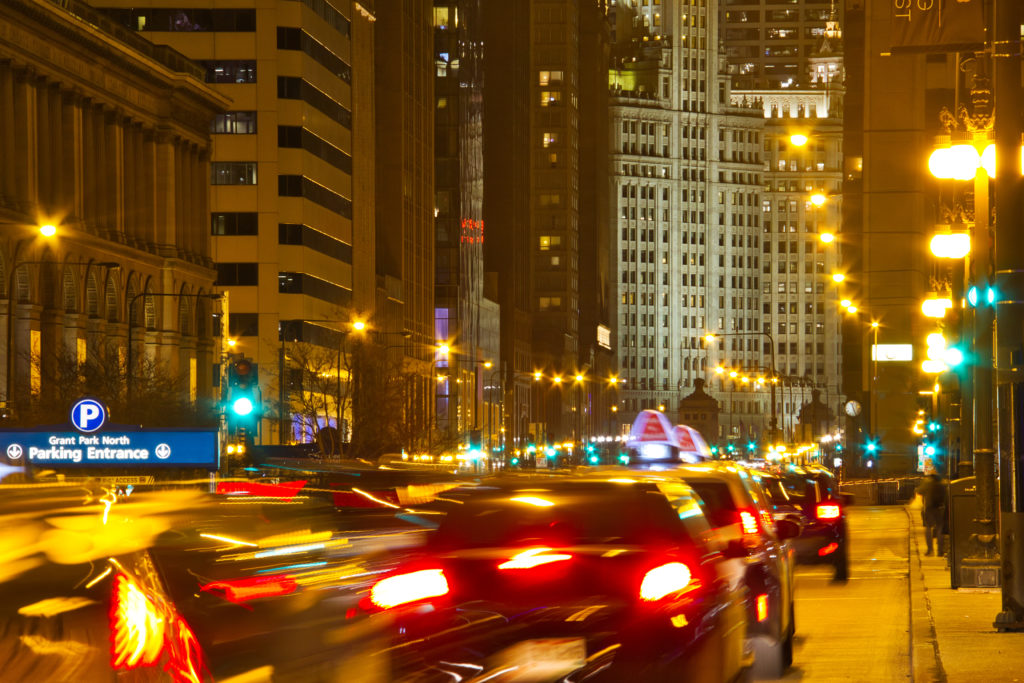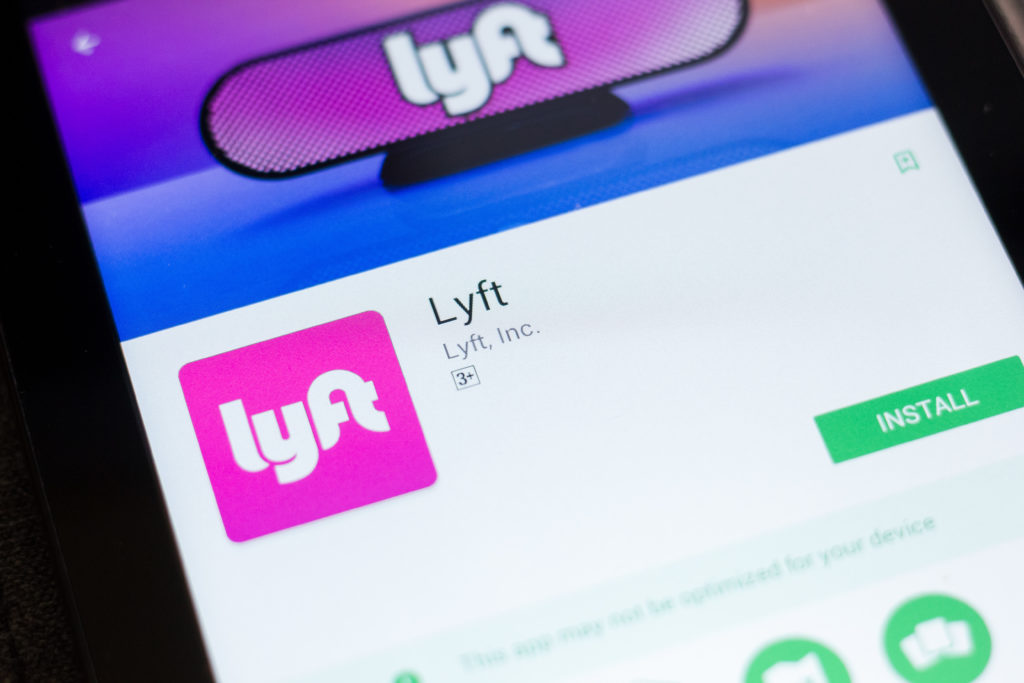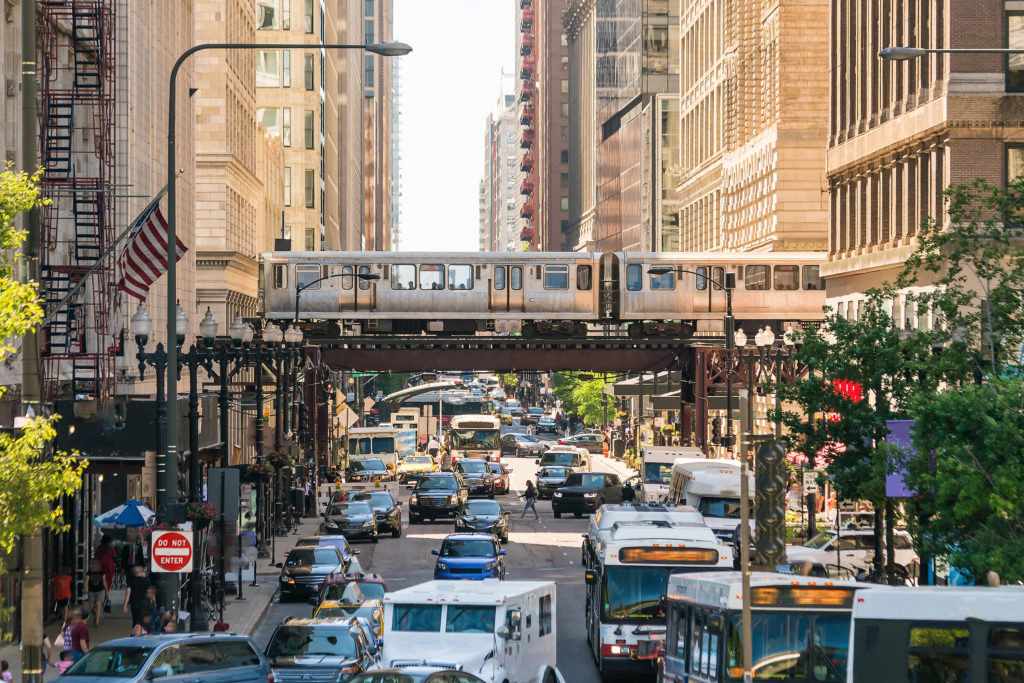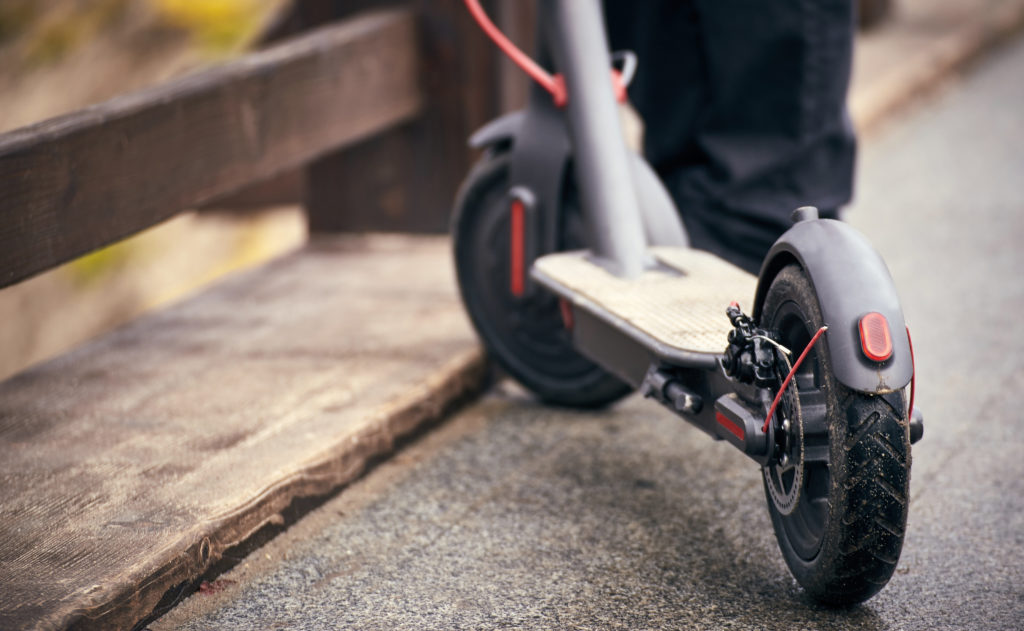
Last year, Chicago began to roll out some infrastructure as a part of a trial initiative to enhance traffic safety. The city describes the new implements as “traffic calming.” They include rubber speed bumps, vertical posts, and hardened centerlines. The measures are meant to mitigate risks associated with left turns which are a notoriously dangerous maneuver. The goal is to promote safer speeds, prevent diagonal path crossings, and enhance visibility for pedestrians. In this post, we will go over some of the benefits of these infrastructure enhancements, including their specific features, benefits, and the rationale behind their implementation.
A Closer Look at Chicago’s Left Turn-Calming Infrastructure
- Rubber Speed Bumps:
Strategically placed rubber speed bumps are one of the main elements of Chicago’s infrastructure for calming left turns. When approaching and navigating a left turn, the bumps are intended to encourage slower turning speeds. Introducing physical obstacles that necessitate slower speeds can significantly decrease the chance of collisions due to excessive speed or difficulty with maneuvering. Rubber speed bumps are meant to remind drivers to exercise caution and reduce their speed when making left turns, ultimately contributing to improved road safety.
- Vertical Posts:
One crucial aspect of guiding drivers during left turns is the implementation of vertical posts. These posts are positioned in intersections to prevent drivers from taking a diagonal path during the left turn. By causing vehicles to adhere to designated paths, the risk of collisions with traffic surrounding the turn is reduced. A safer turning environment is encouraged with these visual cues by discouraging turns that are too narrow or too wide.
- Hardened Centerlines:
Chicago’s left turn calming infrastructure also includes the implementation of hardened centerlines at intersections. These lines are positioned in the pavement to demarcate between pedestrian crossing zones and left-turning vehicles. Hardened centerlines improve drivers’ visibility of pedestrians during left turns by providing a clear visual distinction. This allows drivers to anticipate pedestrian movements so that they can prepare to stop at a particular point. Both pedestrians and drivers may benefit from the implementation of hardened center lines.
The Intended Benefits:
- Safer Speeds:
Rubber speed bumps are meant to encourage drivers to slow down when making their left turn. Slowing down vehicles provides more time for drivers to react to possible hazards. Safer speeds contribute to a more predictable and controlled driving environment, potentially reducing the severity and frequency of collisions and creating a safer environment for pedestrians, drivers, and passengers.
- Enhanced Pedestrian Safety:
The incorporation of vertical posts and hardened centerlines in Chicago’s left turn calming infrastructure is meant to enhance pedestrian safety. Because vertical posts minimize taking shortcuts through crosswalks, potential collisions with cars and pedestrians are decreased. Hardened center lines increase drivers’ visibility and awareness of pedestrians which might be the difference between a safe left turn and a collision. The calming infrastructure promotes greater confidence and security for those crossing intersections by creating a safer pedestrian environment.
- Improved Turn Accuracy:
Chicago’s left turn calming infrastructure ensures that drivers follow designated turning paths accurately. Potential encroachment into other lanes or crosswalks is less likely when vertical posts are placed to help drivers position their left turn. Accurate turns reduce the risk of collisions with other vehicles and contribute to a more efficient and harmonious road network.
Reasons for Implementing Left Turn Calming Infrastructure in the First Place:
- Mitigating Collision Risks:
Left turns present inherent potential risks and challenges, including driver distraction, excessive speed, and dangerous turning trajectories. By implementing left turn calming infrastructure, Chicago aims to mitigate these risk factors and address the risks of collision. At its core, the initiative is meant to reduce the number of collisions associated with left turns.
- Pedestrian Protection:
Chicago’s commitment to pedestrian safety is a driving force behind the implementation of left turn calming infrastructure. Pedestrians face heightened risks when crossing a busy intersection with lots of left-turning vehicles, and vertical posts as well as hardened center lines are meant to reduce these risks.
- Enhancing Traffic Efficiency:
The introduction of left turn calming infrastructure also aims to enhance traffic efficiency and flow. By reducing conflicts and promoting accurate turning paths, the initiative intends to reduce congestion and delays caused by left turns. The resulting smooth traffic flow benefits drivers and pedestrians, making the road network more efficient and improving the commuting experience.
While the left turn calming infrastructure implemented in Chicago shows promising results, exploring potential alternatives and advancements is crucial for improving traffic safety. Below are some potential alternatives to consider:
- Intersection Warning Systems:
Intersection warning systems can provide real-time alerts to drivers approaching intersections. By using cameras, sensors, and algorithms, intersection warning systems aim to detect pedestrians and vehicles, giving advanced warnings about potential hazards. Drivers have more time to react and make safer decisions during left turns when intersection warning systems are in place
- Intelligent Traffic Signal Systems:
There are specific types of signal systems that can help enhance left turn safety. By using real-time traffic data, intelligent traffic signal systems can control signal phases in real-time. This prioritizes safe left turns in order to reduce conflicts with other traffic. Not only can these systems improve safety, but timing signals appropriately can enhance the efficiency of traffic flow.
Through pilot programs and data analysis, it is vital that we consider alternative traffic safety infrastructure so that our intersections can be as safe as possible. When it comes to left turns, intelligent infrastructure that utilizes technology can help to reduce human error.
Chicago’s innovative left turn calming infrastructure, featuring vertical posts, rubber speed bumps, and hardened centerlines, is a good example of an action a city can take to reduce the risks associated with left turns. By preventing diagonal path crossings, improving visibility for pedestrians, and encouraging safer speeds, this initiative aims to reduce collisions, optimize traffic flow, and protect pedestrians. Chicago’s implementation of these traffic-calming treatments is a good first step to creating safer roads in our city. However, more data is needed to assess to effectiveness of this infrastructure, and we must be prepared to pivot and adjust if better options to enhance safety become available. Our city should continue focusing on left turns as a maneuver associated with dangers for drivers and pedestrians alike.




